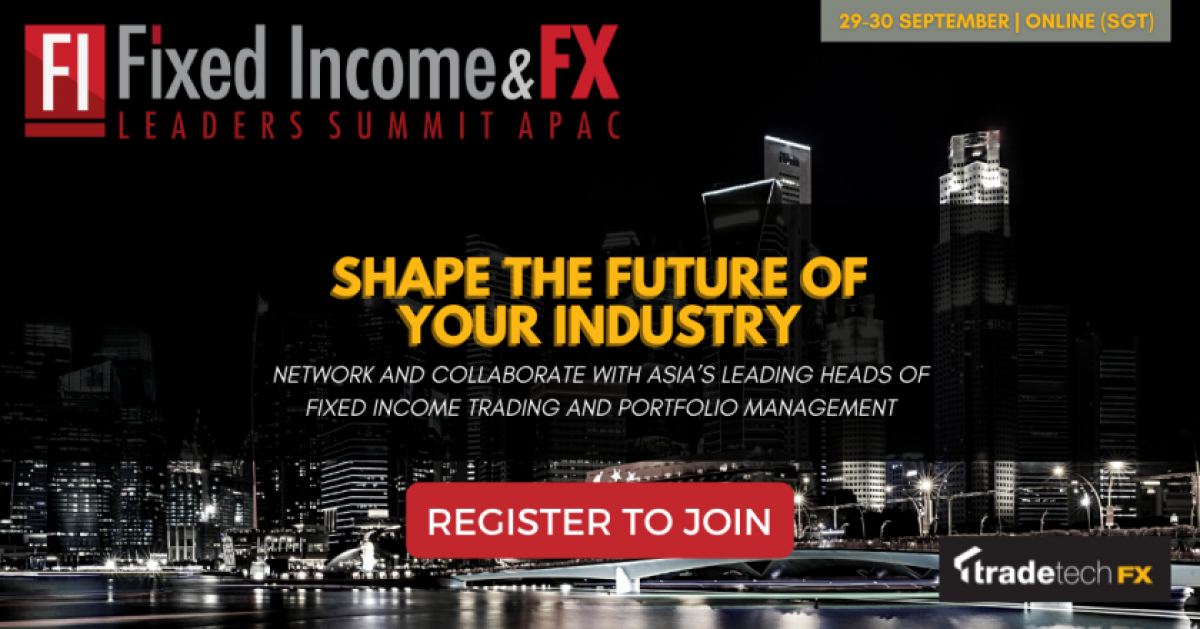Are We at Peak Growth?
James Cheo, CFA, CAIA, FRM, Managing Director, Chief Investment Officer, Southeast Asia, Private Banking and Wealth was recently interviewed by Jo Murphy, Managing Director, Industry Relations, Asia Pacific, CAIA Association
Questions:
James, you were recently promoted as one of three CIOs appointed to steer an integrated investment process and deliver common house views across private banking and wealth management (with a focus on Southeast Asia). This must build very solidly upon your prior chief market strategist role – how’s the new role going?
It has been a both a challenging and exciting journey. In my expanded role, I am responsible for developing investment strategies and themes across all asset classes for private banking and wealth clients in Southeast Asia. At the heart of it, it is about building a robust and solid investment process across the entire private banking wealth spectrum. The goal is for every relationship manager and investment advisor to advise our clients through a portfolio-based approach that is consistent with the HSBC house view.
A changing macroeconomic landscape will undoubtedly impact financial markets ahead – what are your thoughts on this and particularly so for APAC?
The pace of economic growth has started to slow in most countries around the world, and even in Asia. Following the sharp V-shaped recovery earlier this year, we have now entered the mid-cycle stage. But this should not be a negative for markets, as the adage goes that slow and steady wins the race.
Firstly, a slowing economy does not mean a stalling economy. As consumers, particularly Asian consumers will want to spend some of their accumulated savings in the coming months, companies need to rebuild inventories, and governments are helping to extend the economic cycle through huge infrastructure and renewable energy investments.
Secondly, monetary policy can be more gradual – and therefore more supportive. With unemployment still well above the normal rate, and US and global growth easing, the Fed has signaled it is much too early to consider rate hikes. Over in China, where growth momentum is slow, the government is easing policy to target sectors hard-hit by the recent lockdowns.
And thirdly, equity returns in the mid-cycle stage have historically been lower than in the recovery stage, but still very respectable due to continued earnings growth.
Are investors more keenly embracing investment diversification? If so, where in particular is most notable? Has this surprised you? And, building on those points, how should investors steer their way forward?
In light of recent market developments, investors are embracing portfolio diversification across asset classes and geographies. A disciplined approach to investing for the longer term as opposed to market timing remains key to navigating the environment ahead.
There is a greater emphasis by investors to build portfolios that are more resilient to volatility, by managing bond duration, focusing on quality (such as Environment and Social Governance factors) and by actively diversifying their investment portfolios.
Over in Asia, investors have seen significant market volatility due to COVID-19. AS such, we remain neutral on China equities for now as we look for secular growth opportunities there (such as advanced technology, automation and the green revolution) while diversifying geographically.
What has been your biggest investment lesson from COVID?
2020 has been a classic reminder of the investment principle of staying invested. Those who stayed invested during the fastest bear market were rewarded with the fastest bull market in history. For this year, of course, so much comes down to vaccine optimism. So, while returns are expected to be quite strong in 2021, staying invested and diversifying among themes and assets, especially when valuations can be rich, remains essential.
We’ve had significant and continued financial stimulus extended to date, do you foresee this continuing? What are the repercussions of unlimited Fed liquidity? And, what happens when the stimulus tap is switched off?
The policy mix between fiscal and monetary policy is going to change depending on how individual countries are recovering from the pandemic.
Over in the US, growth has been strong due to the reopening process. There is a strong case for the Fed to taper its QE program. However, the Fed will move rather cautiously.
The Fed’s tapering might not be a major driver of US bond yields. Firstly, the reduction of asset purchases should be well communicated by the Fed and we expect it to be announced in December (November is also possible). Secondly, it should be gradual, with only modest monthly reductions to the purchases throughout 2022.
What are your expectations for inflation / deflation ahead – both in the short-term and the longer term horizons?
Near-term inflation is expected to be particularly volatile on a monthly basis, from the interplay of stronger reopening demand on both goods and services, and constraints on supply, in some cases exacerbated by production bottlenecks.
It is likely that US inflation will peak in the coming months. As growth slows, inflation should normalize as well.
However, the path can take several directions – inflation could either surprise us on the upside and become more entrenched or inflation could peak as the pass through of high input cost due to the reopening stabilises.
The Fed has embedded the “average inflation targeting” in their policy setting which means that it will tolerate the current inflation situation. It is plausible the Fed will keep interest rates at zero for the next 1 to 2 years. However, on the QE, the Fed could start communicating about tapering later this year.
Looking at geopolitical risks, what are the Top 3 risks you’re currently focused upon? – and, how are these being factored into your model portfolios?
At this juncture, the risks are largely macro-economic in nature. If inflation turns out of control, the Fed has to hasten its tapering process. Separately, another risk is that if the delta-variant continues to spread rapidly, it will hinder the nascent global economic recovery.
Investors should build portfolios that are more resilient to volatility. They can do this by managing bond duration, focusing on quality (such as ESG factors); buttressing portfolios with income strategies and by actively diversifying their investment portfolios.
How should investors approach ESG integration in their investment portfolios? And, in particular how is it – indeed, is it – different across public vs private markets?
Investors – big and small - have to engage with companies so that corporations in high-carbon activities have no choice but to reconfigure their business models and strategies to reduce reliance on fossil fuels, while incentivizing companies to be embrace ESG and to be more innovative with lower carbon solutions.
Other than shareholder activism, investors with more sophisticated tools should start stress testing their portfolios against climate scenarios of above 1.5 degree Celsius of warming as well as the over two to three degree Celsius scenarios.
Other than managing risk, investors have to recognize that the sustainability revolution will also unlock many opportunities.
First, companies that have strong ESG scores, are better managed and consequently more resilient for against the threat of climate change. Therefore, ESG leaders should exhibit more resilient investment performance and should part of investors’ core portfolios.
Second, the transition towards a green economy will unlock opportunities in clean energy, smart buildings, the electrification of transportation, and technologies associated with carbon capture and these will be structural themes for investors in the years ahead.
Our sustainability themes highlight the rising importance of climate adaptation technologies and the increased focus on the social aspect of ESG.
ESG is clearly a critical component of corporate performance in the public market. One additional challenge for private market companies is that there are very few ESG solutions and data collection systems available. But this does not make ESG reporting any less important for private markets.
Private markets have to demonstrate the same compliance with ESG standards as with public companies. Companies entering the public market need to have a plan for ESG performance that is fully integrated into overall corporate reporting, as investors are now very discerning and demanding when it comes to ESG investing and standards.
How is investor appetite – particularly across the Asia Pacific – for all things private markets? How has this changed vs recent years? What’s your view for investment activity into private markets ahead? Any standout sectors / geographies in particular?
With US equity markets at all-time high and bond yields at record low, there is a strong case to diversify into private markets for better portfolio diversification and risk-rewards.
As expected returns from public markets are going to be lower, private markets offer better risk-return trade-offs. The lure of IRRs in the high teens to mid-20s is very attractive.
Asia’s exposure to private markets is below today’s global norms, especially in private credit, and less crowded markets tend to be less efficient. Where there is less efficiency in the market, there are opportunities to drive more alpha and return.
The attractiveness of risk in Asian Private Credit markets relative to developed markets could see an increased focus on Asian Private Credit from global investors.
The opportunity set could come from various parts of Asia such as India and China. In India, the broadening credit gap and rising NPLs present opportunities in performing private credit and distressed opportunities. In China, deleveraging efforts and onshore defaults lead to further gaps in credit availability across growth capital and stress refinancing.
Crucially, as ESG has become an integral part of the investment process globally and we do see similar trends emerging in Asian private credit.
Which investment strategies do you favour for the short, medium and longer term? Why?
The transition to the mid-cycle stage has caused us to reduce exposure to some early-cycle sectors such as industrials and materials, and to increase our focus on quality and on large caps. In the continued low rate environment, we also look for dividend income to complement what we can find in global high yield and emerging market bonds.
But while it is clear that the cycle and equity returns are slowing, it is less likely that things will be steady. Vaccinations allow economies to reopen, but the path can be volatile due to the delta variant. Similarly, supply chain bottlenecks should be resolved over time, but reports of shortages can lead to market nervousness. And while we expect inflation to fall in coming quarters, the risk is that this could be delayed, causing bond yields to remain ‘low but volatile’.
So investors need to build portfolios that more resilient to volatility, by managing bond duration, by focusing on quality and by actively diversifying their investment portfolios.
Over the longer term, there is a need to be positioned for structural themes such as sustainability, the digital transformation and Asia’s new growth path allow investors to be somewhat less sensitive to the short-term uncertainties and help create more resilient portfolios. Even for the longer term, expected future returns will be slower, given the sharp run-up we’ve seen in recent years. We don’t think that clients should react to this by moving to the riskiest opportunities. Rather, limiting cash balances and remaining invested in diversified portfolios, looking at the best opportunities across asset classes and regions should help win the marathon.
How are you viewing emerging markets today vs prior to the COVID Pandemic? How will they perform – vs developed markets – ahead?
Already we are witnessing the peaking of growth. Global debt to GDP is expected to reach 380% by the end of 2021, and the accumulation of debt will slow future growth, globally.
In emerging markets, it really depends on how emerging markets are rolling out the vaccination program; its fiscal spending and ultimately how each EM country emerges from the pandemic.
The pace of recovery in the EM space has varied widely, but with vaccinations trending higher and a restart for capital expenditures. There will be increasing differentiation amongst EM countries.
Overall, our outlook for emerging markets debt, especially Asian credit is constructive, and we believe the asset class is poised to deliver strong absolute and risk-adjusted returns.
In the current environment, we believe being selective—among segments of the market and individual countries—will be key to capturing these returns.
What can we expect from you at the highly anticipated FIFX APAC Leaders’ Summit 2021 and why is this a must-not-miss event?
I am grateful to be the opening keynote for the FIFX APAC Leaders’ Summit 2021. I am preparing my keynote presentation on how the investment landscape will be reshaped by the global pandemic.
It is going to be a physical event and I am looking forward to interacting and engaging with the live audience.
With so many esteemed speakers, the exchange of ideas is going to be exhilarating!
- Join James’ session: ‘Opening Keynote: How will the changing macroeconomic landscape impact financial markets in 2022 and what implications do these have on your fixed income trading business?’. Register now to attend the much-anticipated Fixed Income Leaders Summit Asia (29 - 30 September 2021, SGT).

About the Authors:
James Cheo is Chief Investment Officer, Southeast Asia for Private Banking and Wealth Management at HSBC. Mr. Cheo is a member of the Global Investment Committee for Private Banking and Wealth Management and also a member of the Regional Investment Committee in Asia. In his role, he spearheads the development of investment strategies across all asset classes for private banking and wealth management clients in Southeast Asia.

Prior to re-joining HSBC Private Banking, James was Senior Investment Strategist at Bank of Singapore,
responsible for asset allocation and thematic research. Before that, James assumed Investment Strategist roles at
Barclays Wealth Asia. From 2004 to 2009, James served as Senior Economist at the Monetary Authority of Singapore, where he was part of the team that formulated policy actions for Singapore during the 2008 Global Financial Crisis.
With his knowledge and wealth of experience, his investment views are frequently sought after. He has established a strong media profile, with appearances on notable financial media including Bloomberg, CNBC, Channel News Asia, Channel 8 Mandarin News; and printed publications such as the Financial Times, Straits Times, Business Times.
James graduated with First Class Honours in Finance from Nanyang Technological University. He was awarded the Chartered Financial Analyst charter in 2007.
Jo Murphy has been in Asia for over 20 years, predominantly based in Hong Kong but with two valuable years spent in Singapore. She has held several senior Asia Pacific wide management positions, successfully leading sales, business development, marketing and client relationship management divisions for major institutions; and has both built and managed large and effective regionally located teams.

Jo was expatriated to Hong Kong, with Morgan Stanley, in early 1997 and has worked for several global institutions; covering intermediary, buy and sell side, entrepreneurial and now in a professional education business environment - throughout the Alternative Investment industry.
In 2000, Jo joined HSBC Securities Services (previously Bank of Bermuda) as Head of Sales, Asia Pacific (based in Hong Kong) and in 2005 moved on to Head of Sales Asia (ex-Japan) and Product Specialist for all alternative investment products at Deutsche Asset Management (in Singapore). In 2008 Jo joined Triple A Partners, a privately held group. In early 2012 Jo joined the Chartered Alternative Investment Analyst (CAIA) Association, the international leader in alternative investment education and provider of the CAIA designation, as Managing Director, Asia Pacific.
Jo enjoys the reputation of being hard-working, capable, committed and commercial; was voted “Asia’s most influential woman in the alternative sector” and also one of “The 25 most influential people in Asian hedge funds” by the industry’s leading AsianInvestor magazine. Jo also was a founding member of the Hong Kong AIMA Chapter, previously held an Executive Committee Member position and now sits on its Education Committee. Further, she also holds a number of corporate advisory positions, is a Fellow of SUSS (Singapore) as well as an advisory council member of UPACA Gurukul (India).




